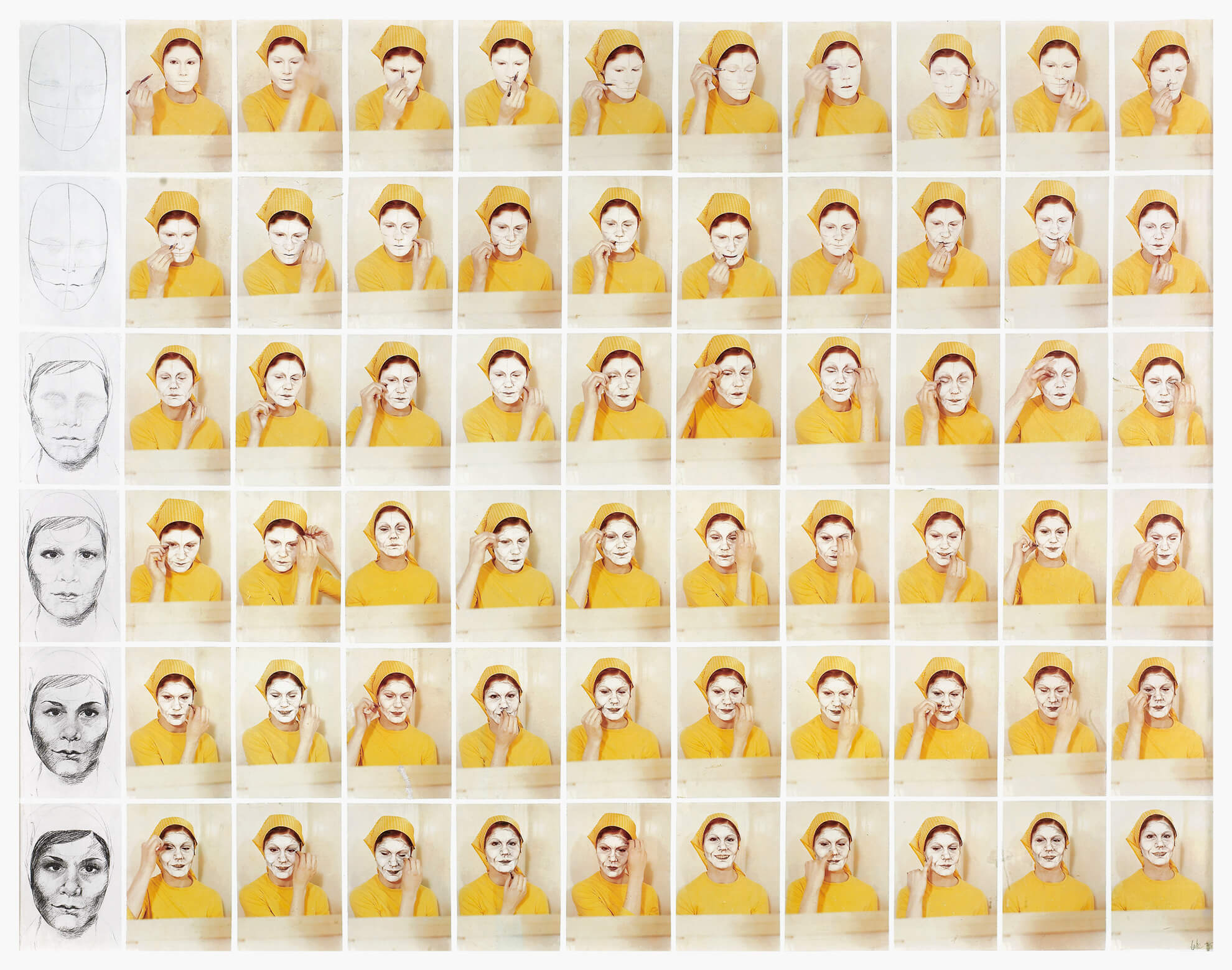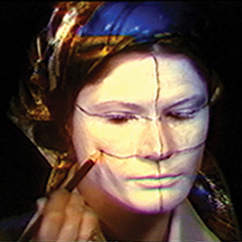The Natural Way to Draw 1975

Suzy Lake, The Natural Way to Draw (detail), 1975
Colour emulsion transfer on uncoated canvas, 102.5 x 134 cm
Art Gallery of Ontario, Toronto
The Natural Way to Draw borrows its name from a 1941 drawing manual by Kimon Nicolaïdes. For Lake, the manual brought back fond memories of her grandfather, who owned the book and fostered her interest in art as a child, drawing with her and taking her to visit the Detroit Institute of Art. It is both a performance captured on video and a storyboard for the actions captured within.

The video depicts Lake as she receives and follows the instructions being read from the manual by an off-camera voice. Appearing in whiteface makeup for the last time after having experimented with it for three years, Lake lets her own visage become the surface on which she performs the directives. The effect appears to flatten her face as she applies lines and shading directly onto her skin. Elizabeth A.T. Smith observes that this work is similar to that of other artists at the time—notably, Bruce Nauman (b.1941) and John Baldessari (1931–2020)—who similarly examined and critiqued notions of artistic process and artistic genius by performing repetitive gestures in response to instructional cues.
Lake had already combined the medium of photography with drawing by hand in such works as A One Hour (Zero) Conversation with Allan B., 1973, in which she brought the behind-the-scenes process of image selection to the fore by making marks on the photographs with grease pencil, as if editing the image in the manner of a professional photographer or photo editor. In The Natural Way to Draw she returns to drawing and painting—processes she had temporarily put aside in order to focus on other media.
In the storyboard component of the work, Lake combines drawing and photography by assembling a grid of sixty-six images—sixty photographs and six drawings. The first column documents the process of drawing a face, from basic geometric shapes to the addition of shading and detailed contour lines, to finally arrive at the appearance of a dimensional portrait in the final frame. The photographs in each row correspond to the steps represented in each of the drawings, depicting Lake, in whiteface and dressed in a yellow sweater and matching yellow kerchief, applying face makeup not to accentuate beauty, but to mimic the techniques of the drawing manual, using her own face as the canvas. The drawing instructions, which make sense on the flat surface, appear exaggerated when applied to Lake’s face; the drawn portraits in the first column represent a standard drawing and, when applied to Lake herself, a deviation or manipulation of the norm.

 About the Author
About the Author
 More Online Art Books
More Online Art Books
 Acknowledgements
Acknowledgements